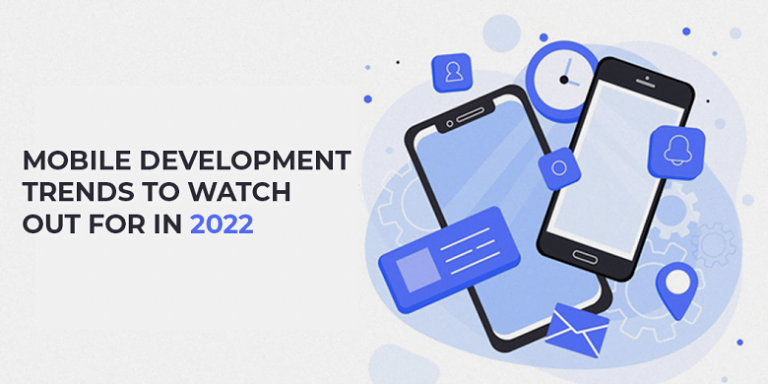For the past several years, the mobile application development company has been at the forefront of tech trends, and it’s not showing any signs of slowing down in 2022. In fact, as more and more people continue to use smartphones and tablets as their primary method of internet consumption, there are some interesting mobile app development trends on the horizon that will affect mobile app development throughout the next several years.
Mobile App Development Trends For 2022
Here are just a few mobile app development trends that you will want to keep an eye on over the next couple of years. Let’s start from here:
1) Mobile User Experience
To ensure that your app remains relevant, it’s important that you consider how users will interact with it. A great user experience is going to be crucial as technology evolves and mobile devices become more powerful. To compete, you will need a modern app that is intuitive and allows users to accomplish tasks quickly. This trend is not likely to fade away anytime soon. If anything, expect it to continue evolving into new ways for people to access information on the go.
2) Integration with IoT
In fact, there is a promising future for mobile app development since it will be a natural home to integrating with the Internet of Things (IoT) devices. It is expected that by 2022 around 50 billion IoT devices will be interconnected through various networks and mobile apps. It would also help mobile app developers improve existing services while they invent new ones based on IoT data.
3) Adoption of BYOD (Bring Your Own Device) Policies
BYOD (Bring Your Own Device) policies are growing rapidly, and they are going to have a profound impact on mobile app development. Essentially, these policies enable employees to use personal devices (such as iPhones or Androids) that connect to their work systems.
The growth of BYOD means you will need apps and mobile-friendly websites that your customers can access from almost any device.
4) Open Source Frameworks
They allow developers to create cross-platform applications that work on multiple platforms, such as Android and iOS. They are designed so any developer can modify them. These frameworks help you avoid reinventing many of your development processes, allowing you and your team to focus on creating value instead of wasting time developing everything from scratch.
Instead of reinventing an already existing wheel, mobile open-source frameworks help you enhance it with additional features or fix bugs that other developers overlooked.
5) API Management
If you are using a third-party toolkit or open-source framework, it probably has an API. Use them. If you are writing your own APIs, plan now how you will use them (and how your client will use them) as part of your development process. In 2023, we won’t be surprised to see software designed specifically with third-party APIs in mind.
6) Enterprise Mobile App Development
More And More Businesses Are Warming Up To Mobile Apps. Still, The Revolution Is Just Getting Started: In 2019, we saw an increase in enterprise mobile app development as large businesses started taking mobile apps seriously. Companies from several industries have turned to developers like us at Global Apps Studio because; they are no longer satisfied with their old desktop applications.
7) Cloud-based Solutions
Cloud-based mobile app development platforms have seen rapid growth over the past few years and will continue to be a force in the industry well into 2022. IDC’s latest projections show that cloud-based app development services will grow by 36 percent between 2017 and 2020.
This is happening because cloud-based apps help companies save money and avoid IT issues. It’s why 88 percent of software developers have shifted their focus from onsite application hosting towards hybrid or fully hosted models.
8) Chatbots and Virtual Assistants
Chatbots are also called virtual assistants. These are messaging apps or websites; that can answer questions and perform tasks like booking a flight or finding a movie showing. They are particularly prevalent on mobile devices, but there is potential for them to be on desktops as well.
Chatbots are here now and will continue to become more common. It’s just a matter of what platform they are on. (Hint: Your next favorite app may be a chatbot.)
9) Cloud-Based Automation and Robotics Process Automation Tools
Cloud-based automation tools, also called cloud services, allow developers to automate repetitive tasks without having to write complex code. There are a number of different types of cloud services that you can use depending on your needs.
Automation tools using robotic process automation are best suited for large companies with many employees and complex processes; while machine learning automation is ideal for small companies with limited resources.


